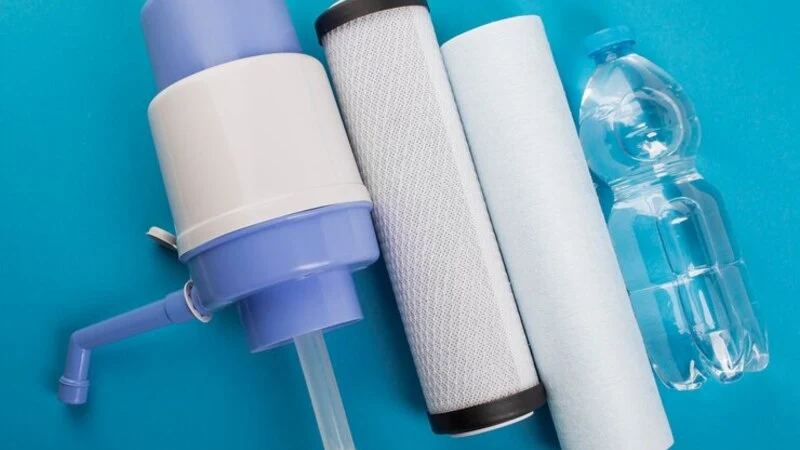In a world where water quality is increasingly under scrutiny, ensuring access to clean and safe drinking water is a top priority for many households. With concerns about contaminants such as lead, chlorine, pesticides, and microplastics, installing a water filtration system can provide peace of mind and improve the overall quality of life.
However, before diving headfirst into purchasing and installing a filtration system, there are several crucial factors to consider.
Water Quality Analysis
Before investing in a filtration system, it’s essential to understand the specific contaminants present in your water supply. Most municipal water supplies provide annual Consumer Confidence Reports (CCR) detailing the quality of the it.
Additionally, you can conduct independent water tests to identify any additional contaminants or issues specific to your area. Armed with this knowledge, you can select a filtration system tailored to effectively address the unique composition of your water, ensuring the health and safety of your household.
Types of Contaminants
Different filtration systems target specific contaminants, so it’s crucial to know which pollutants you need to address. Common contaminants include sediment, chlorine, heavy metals (such as lead, mercury, and arsenic), volatile organic compounds (VOCs), and microbial pathogens.
Research the capabilities of various filtration systems to ensure they effectively remove the contaminants present in your water. Understanding the composition of your water will guide you in selecting the most suitable technology for your household’s needs.
Water Usage and Flow Rate
Consider your household’s water usage and flow rate requirements when selecting a filtration system. Factors such as the number of occupants, water consumption habits, and appliance usage (e.g., washing machine, dishwasher) will influence the size and type of system needed. Ensure the filtration system can handle your household’s demand without compromising water pressure or flow rate.
Consideration of peak usage times, such as morning routines or laundry days, is crucial to ensure the filtration system can meet demand during periods of high water usage. Additionally, factor in any future changes in household size or usage patterns to ensure the system remains effective in the long term.
Installation Requirements
Determine whether you have the necessary plumbing infrastructure and space to accommodate the chosen water filtration installation. Some systems may require professional installation, while others can be easily installed by homeowners.
Consider the installation process and any modifications or additional equipment needed to integrate the filtration system seamlessly into your household.
Filtration Technology
There are several types of water filtration technologies available, each with its pros and cons:
- Activated Carbon Filters: Effective at removing chlorine, VOCs, and unpleasant odors and tastes. However, they may not effectively remove heavy metals or microbial contaminants.
- Reverse Osmosis Systems: Highly efficient at removing a wide range of contaminants, including heavy metals, fluoride, and dissolved solids. However, they can be wasteful, producing a significant amount of wastewater, and may require regular maintenance.
- UV Purifiers: Utilize ultraviolet light to deactivate and destroy microbial contaminants, such as bacteria and viruses, without altering the water’s taste or odor. However, they do not remove other types of contaminants and may require periodic bulb replacement.
- Ion Exchange Filters: Effective at removing heavy metals and water hardness by exchanging ions. However, they may not remove microbial contaminants or VOCs.
Evaluate the advantages and limitations of each technology based on your specific water quality needs and preferences.
Maintenance and Operating Costs
Consider the long-term maintenance and operating costs associated with the filtration system. Factor in expenses such as filter replacements, energy consumption, and any required professional servicing.
Compare the ongoing costs of different systems to ensure they align with your budget and expectations. Additionally, take into account the lifespan of the filtration system and any warranties or guarantees offered by the manufacturer to safeguard your investment over time.
NSF Certification
Look for filtration systems that are certified by the National Sanitation Foundation (NSF) or other reputable third-party organizations.
NSF certification ensures that the product has been independently tested and meets specific performance standards for contaminant removal. Verify the certification status of any filtration system you are considering to ensure its effectiveness and reliability.
Environmental Impact
Consider the environmental impact of the filtration system, including energy consumption, waste generation, and potential chemical usage.
Choose eco-friendly options whenever possible, such as systems with minimal wastewater production or those made from sustainable materials. By prioritizing environmental sustainability. You can minimize your ecological footprint while still enjoying clean and safe drinking it.
Conclusion
Installing a water filtration system is a proactive step toward ensuring the health and well-being of your household. By considering factors such as water quality analysis, contaminant removal capabilities, water usage, maintenance costs, and environmental impact, you can make an informed decision that meets your specific needs and preferences.
Remember to regularly monitor and maintain your filtration system to ensure optimal performance and continued access to clean, refreshing water for years to come.
